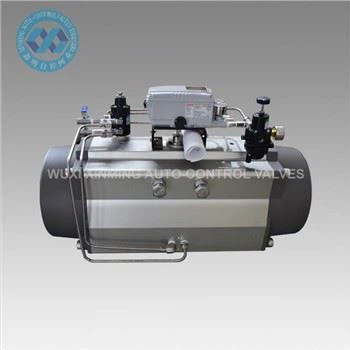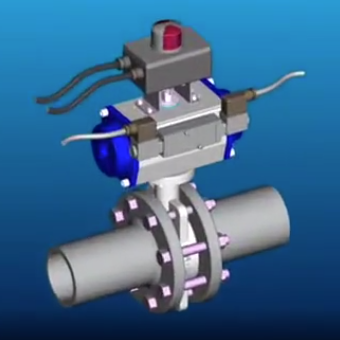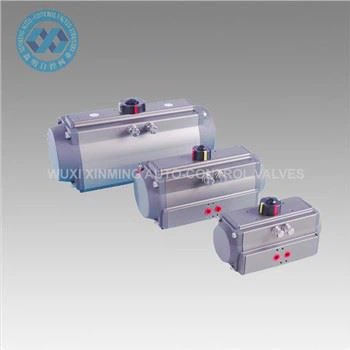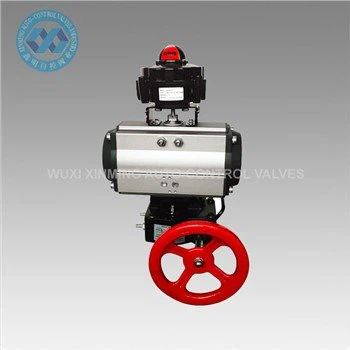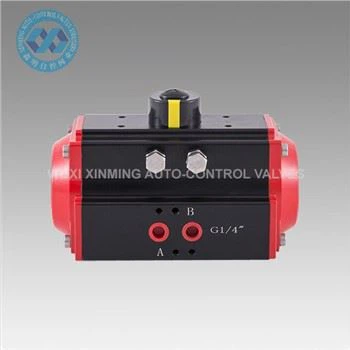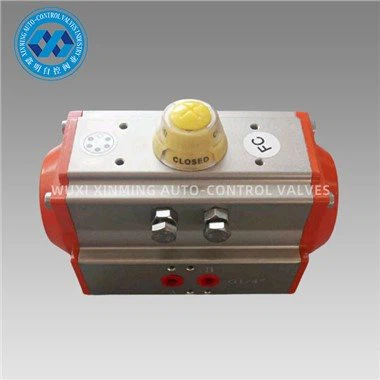Introduction to Pneumatic Rotary Actuators in Automation
Pneumatic rotary actuators serve as critical components in industrial automation systems, converting compressed air energy into precise rotational motion. These devices offer reliable angular positioning for various automation applications, from valve control to robotic movement.
Key Design Features and Specifications
1. Actuator Types and Mechanisms
- Rack-and-pinion design: Provides high torque output with precise angular positioning (typically 90° or 180° rotation)
- Vane-type actuators: Compact solution offering up to 270° rotation
- Scotch yoke mechanism: Delivers high torque for heavy-duty applications
2. Technical Specifications
Advantages in Automation Systems
- Fast response times: Enables rapid positioning in high-speed automation lines
- Reliable operation: Minimal maintenance requirements compared to electric alternatives
- Intrinsic safety: Suitable for hazardous environments without spark risk
- Cost-effectiveness: Lower initial investment than electric actuators
Industrial Automation Applications
1. Valve Automation
- Quarter-turn ball and butterfly valve control
- Process control valves in chemical and petrochemical industries
2. Material Handling
- Indexing tables for part positioning
- Conveyor diverter systems
- Robotic end-effector rotation
3. Packaging Machinery
- Rotary sealing and capping stations
- Product orientation and labeling systems
- Case packing and palletizing equipment
Selection Criteria for Automation Projects
1. Performance Requirements
- Torque calculation: Must exceed load requirements with safety factor (1.5-2x)
- Speed requirements: Typical 90° rotation in 1-2 seconds
- Positioning accuracy: ±0.5° to ±1° depending on design
2. Environmental Considerations
- IP ratings: Protection against dust and moisture ingress
- Material compatibility: Aluminum or stainless steel construction
- Temperature extremes: Special seals for high/low temperature operation
3. Integration Features
- Mounting options: Dual foot, flange, or clevis mounting
- Accessory compatibility: Position sensors, speed controls, and manual overrides
- Communication interfaces: NAMUR standard for easy accessory integration
Maintenance and Reliability
-
Preventive maintenance schedule:
- Quarterly seal inspections
- Biannual bearing lubrication
- Annual performance verification
- Expected service life: 5-10 years with proper maintenance
Future Trends in Automation
- Smart actuator integration: Incorporating IIoT capabilities for predictive maintenance
- Energy efficiency improvements: Optimized air consumption systems
- Hybrid designs: Combining pneumatic and electric actuation benefits
- Lightweight materials: Advanced composites for weight reduction
Conclusion
Pneumatic rotary actuators remain essential components in modern automation systems, offering reliable, cost-effective rotational motion control. By carefully considering torque requirements, environmental conditions, and integration needs, engineers can select optimal actuator solutions for their automation projects. The continued development of smart features and energy-efficient designs ensures these components will maintain their importance in industrial automation.
If you want to learn more about low-priced products, please visit the following website: www.xm-valveactuator.com


